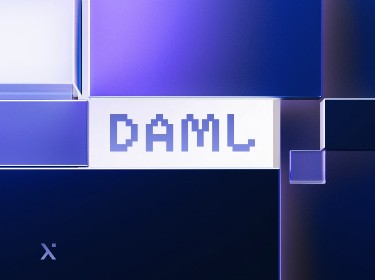Smart contract hacks result in the loss of funds, sensitive data, and project credibility. Neglecting a smart contract audit puts your business at risk, making it vulnerable to a range of different security breaches.
Smart contracts are specific programs that automate the execution of an agreement between parties without the need for intermediaries. These programs guarantee that the execution will correspond exactly to the logic incorporated in the smart contract.
While offering multiple benefits, such as transparency of workflows, tamper-proof transaction execution, and autonomy, smart contracts can nonetheless be prone to hacks: even the correct execution of their code cannot guarantee the complete safety of a smart contract.
As of April 2023, the total value of assets hacked in DeFi has already surpassed $5 billion. These hacks not only lead to significant financial losses but also damage the reputation of your project.
A smart contract audit is a proven way to minimize risks associated with smart contract vulnerabilities and save millions of dollars from potential hacker attacks. In this article, we will share insights about what makes a good smart contract audit and how to perform it in an efficient way.
Check out our smart contract development offering and let’s see how we can assist you with your future project
This article is part of our larger series dedicated to Smart contracts. To explore this topic in greater detail, here’s the list of articles we recommend:
Best Smart Contract Use Cases Across Industries to Explore in 2025 and Beyond
(In)Famous Smart Contract Hacks: Why They Happened and How to Avoid Them
Most Common Smart Contract Vulnerabilities and How to Prevent Them
What Are the Top Smart Contract Platforms and How to Choose the Right One?
What is a smart contract audit?
A smart contract audit is a process that involves a thorough analysis of smart contract code with the goal to spot security vulnerabilities, inefficient logic, and poor coding practices.
A smart contract audit helps businesses ensure increased security of their solution, reduce risks, and avoid vulnerabilities. During a security audit, smart contract auditors analyze each line of code paying particular attention to areas that could be vulnerable to malicious attacks.
At the completion of the audit process, smart contract auditors create a report with found issues and recommendations on how to resolve them.
Why does your business need a smart contract audit?
Even a tiny error in the smart contract code or logic can lead to irreversible consequences. According to ChainAnalysis, 2022 was a record-breaking year for crypto hacking, with $3.8 billion stolen from cryptocurrency firms.
In 2022, Ronin Network, which powers the gaming marketplace for Axie Infinity, was breached by hackers who hijacked nearly $615 million in funds. The transgression occurred because hackers got access to private keys and forged fake withdrawals.
To ensure the safety of your project, you should implement all possible preventative security measures, including a smart contract audit that will:
- Help you avoid security threats and extra costs associated with potentially disruptive errors after deploying a smart contract
- Provide a comprehensive report with details on identified vulnerabilities and recommendations for a mitigation strategy
- Facilitate ongoing security assessments
How to perform a smart contract audit in 4 steps
An efficient smart contract audit process generally consists of four key steps: documents collection, manual review and automated testing, initial report, remediation check, and final audit report. Let’s examine each part in greater detail.
![]()
1.Documents collection
This step involves collecting technical documentation and functional requirements, including codebase, architecture, whitepaper, and other relevant data that provide auditors with a high-level guide to what the audited code aims to achieve.
If your business prepares requirements and documentation for smart contract auditors, make sure that all the essential aspects are covered, namely:
- The audit scope is determined and verified
- Functional requirements are clear, straightforward, and specific
- System limitations are identified
- Tech documents include system architecture, system inputs and outputs, utilized technologies and third-party tools, development environment description, and system dependencies clarification
- The development environment is set up
- Access to a well-configured code via GitHub or other repositories is granted
2. Manual review & automated testing
At this stage, smart contract auditors create test cases and run automated tests, including unit, integration, and penetration tests to spot bugs and vulnerabilities. They also thoroughly inspect each line of the created code to eliminate poor coding practices and make sure there are no problems with contract logic.
Code inspection also involves identifying weak points for common attacks such as frontrunning or reentrancy opportunities.
What’s more, a good smart contract audit should include performance validation and gas analysis and optimization, which allows for the reduction of gas fees within a protocol. A cost-efficient logic will help businesses save a great deal of money while optimizing the overall costs of project development.
3. Initial audit report
When the audit process is completed, auditors create an initial audit report that should include:
- Discovered code flaws
- Test coverage analysis report
- Identified bugs and security issues, classified on the basis of their severity
- Recommendations for how to resolve issues and eliminate found vulnerabilities
4. Remediation check & final report
The fourth step of a smart contract audit requires you to fix and resolve all found issues. As for the role of the auditors, they need to create the final audit report, taking into account the actions taken to resolve the existing vulnerabilities.
It is a good practice to make this report public in order to provide users and stakeholders with complete transparency.
Different types of smart contract vulnerabilities
There is a whole range of smart contract vulnerabilities that hackers exploit, the most popular being:
- Reentrancy issues. These occur when a smart contract calls an untrusted external contract, allowing it to drain users’ funds.
- Front-running opportunities. These come as a result of poorly structured code and are also due to the visibility of transactions to the public, which allows malicious actors to front-run the transaction and make a profit.
- Logic errors. These include both typographical errors and more serious flaws in the contract logic that can compromise smart contract security.
- Centralization risks. Centralization creates single points of failure that can hinder the security of the protocol.
- Integer overflow and underflow. This happens when a smart contract conducts an arithmetic operation that turns up a number exceeding storage capacity, which results in miscalculation.
Read a full list of the most common smart contract vulnerabilities with detailed explanations and real-life examples in our article
What are the different approaches to a smart contract audit?
Overall, there are two key approaches to smart contract audit: manual and automated smart contract analysis. However, smart contract auditors will quite often use a combination of both approaches. Let’s take a look at each analysis method.
![]()
Manual smart contract analysis
A manual code analysis presupposes a comprehensive and thorough examination of each line of code by an experienced team. The analysis may occur as a check against a list of standard smart contract vulnerabilities or as a check based on developers’ practice and experience.
Compared to automated analysis, this approach is more thorough and complex and it can help detect not only problems located in the code but also those in the contract logic and architecture. Additionally, it is of great use for detecting often overlooked security vulnerabilities, such as inefficient encryption practices.
Automated smart contract analysis
Automated smart contract analysis presupposes using bug detection software to find inefficiencies and vulnerabilities in the code. It considerably eases the auditing process and saves developers’ time, which is why it perfectly suits projects that need faster time-to-market.
However, as there are many false positive results from automated security auditing tools, each result should be checked and interpreted by an auditor. What’s more, automated smart contract analysis tools do not always understand the context, so they can miss certain vulnerabilities while checking the code.
What tools are used in a smart contract audit?
To ensure that smart contracts are secure and reliable, there exist numerous smart contract audit tools, including Mythril, MythX, Slither, SmartCheck, Ethlint, ContractFuzzer and Oyente.
Mythril
Mythril is a security analysis tool supporting smart contracts built on Ethereum, Hedera, Tron, Vechain, Quorum, Roostock, and other EVM-compatible blockchains. Mythril makes use of the latest analysis techniques, such as symbolic execution and taint analysis. However, it cannot identify flaws in business logic, with a resulting risk of serious financial losses.
MythX
A security analysis tool designed for Ethereum and EVM-based smart contracts. MythX is capable of conducting static analysis, dynamic analysis, and symbolic execution. It can be used at all phases of the project lifecycle.
Slither
Slither is one of the most popular static analysis tools for Solidity smart contracts. It was optimized to detect vulnerabilities with a very low false-positive rate and it can be easily integrated into a CI/CD environment, which ensures greater ease of use for developers.
SmartCheck
SmartCheck is a static analysis tool that identifies vulnerabilities in Solidity programs. It can detect a wide range of security issues, including reentrancy, timestamp dependence, unchecked external calls, and unsafe type interface.
Ethlint
Ethlint is a Solidity code analyzer that detects style and security issues, as well as enforcing community best practices. Developers can leverage the tool’s command line interface to integrate it with their IDEs or extend Ethlint’s functionality using its plugins.
ContractFuzzer
ContractFuzzer makes use of the fuzzing technique to spot issues in Ethereum smart contracts. The technique hinges on executing the smart contract with multiple and different inputs to trigger a strange behavior and find a vulnerability. It can detect gasless send, exception disorder, reentrancy, timestamp dependency, and dangerous delegatecall. However, it suffers from a high false-negative rate.
Oyente
Oyente is one of the oldest smart contract auditing tools on the market. It allows developers to analyze local and remote smart contracts and verify assertions for those contracts. It’s a command-line tool, but it also offers a web interface. It is best used in the CI/CD environment to reduce the possibility of missing a vulnerability that other tools have not been able to find.
Read our case study on smart contract analysis and security checks for an NFT marketplace
Closing thoughts
With blockchain technology and smart contracts becoming ever more prevalent, businesses need to prioritize smart contract audits so that they can mitigate project risks and prevent the potential security breaches that often lead to huge financial losses.
If you want a smart contract audit, you can reach out to our smart contract auditors. With 10 years of experience in blockchain development and thousands of audited lines of code, we have established an effective smart contract audit framework that will guarantee the security of your project.
To safeguard your business from cybersecurity threats and compliance issues, we can also assist you with a cyber security audit.




